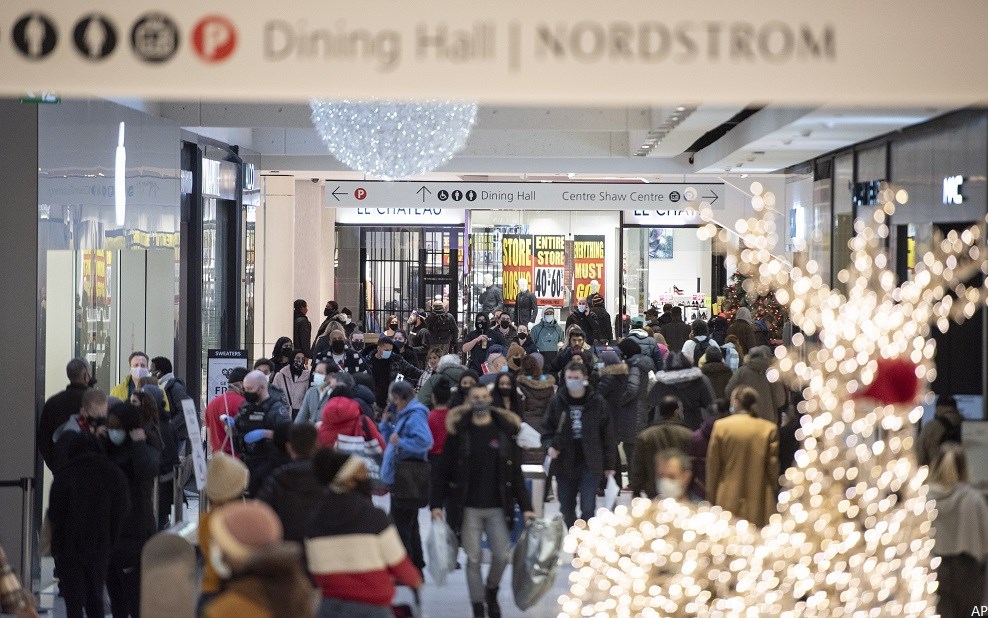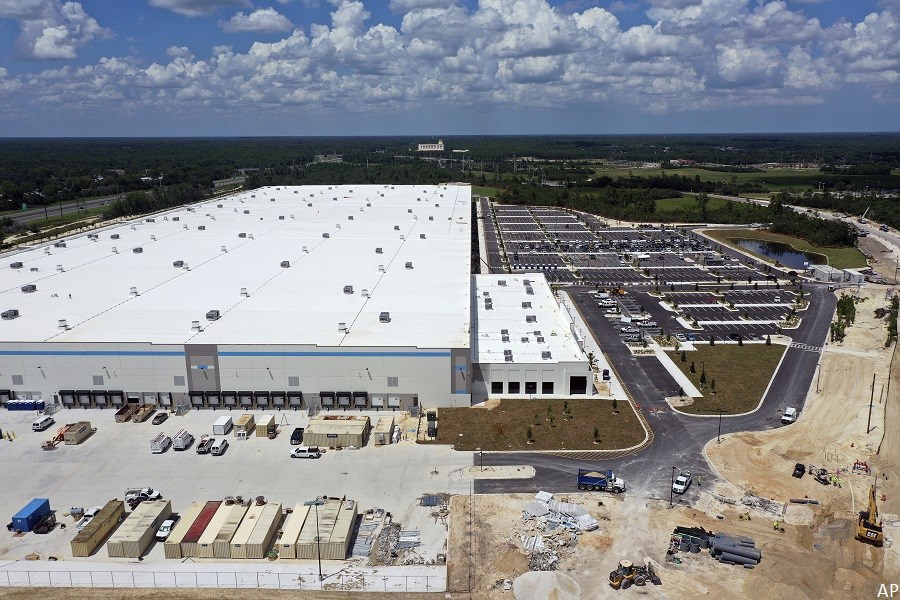
In an effort to beat the crowd before risking barren shelves later in the season, holiday shopping has already kicked off to a robust start. In fact, with inventories below where many retailers would have preferred to start this holiday season, the limiting factor this year for holiday sales may be the lack of product as opposed to the wherewithal to buy it.
According to Kevin Brown, Morningstar's real estate equity analyst, total U.S. retail sales for the fourth quarter of 2021 are projected to rise by 9.5% as compared with this time last year. This comes on top of strong retail sales seen in the fourth quarter of 2020, which were up over 6% from 2019. Consumers had bumped up their spending on goods during the 2020 holiday season as the pandemic limited spending on travel and services.
Yet, while shoppers may be spending more this year, that doesn't necessarily equate to much of an increase in gifts under the tree. While the nominal amount of spending is expected to be high, up to half of that spending could be owed to the impact of inflation. In the U.S., core CPI for the fourth quarter is projected to increase 4.8% according to the Inflation Nowcasting from the Federal Reserve Bank of Cleveland.
Shoppers Returning to In-Person Holiday Spending but Still Buying Online
Last year, U.S. e-commerce sales surged an eye-popping 32% as the impact of social distancing and shutdowns limited in-person shopping.
The amount of foot traffic across retail categories plunged in early 2020 and only returned to pre-pandemic levels this summer.
With the pandemic continuing to recede, shoppers want to experience the traditional holiday shopping and activities that they missed out on last year. As such, we expect that consumers will continue to return to the malls and stores. We forecast that U.S. sales leveraged to the holidays across the brick-and-mortar channels (excluding areas such as gasoline, motor vehicles, groceries, and so on) will rise 9.1% this year.
However, as purchasing habits have evolved, we still see significant growth ahead for online sales. We are forecasting that total e-commerce sales will grow by 10.4% in the fourth quarter. The pandemic has accelerated the ongoing evolution of how consumers make their purchasing decisions and where those sales occur.
Retailers have had to quickly learn how to adapt to these changing consumer purchasing preferences and implement an omnichannel approach. Looking forward, successful retailers will have to be able to balance marketing and selling their products online versus in-store. In addition, those same retailers will also have to manage their in-store and warehouse inventories to meet this hybrid of purchasing preferences.
Limited Inventories Pulling Holiday Sales Forward
In its wake, the pandemic has left a multitude of economic dislocations that have not yet recovered; however, many other economic factors are lining up to bolster holiday sales.
With the stock market at its highs, wage growth rising, unemployment rate falling, elevated savings rates, and muted recovery in services and travel, consumers generally have plenty of resources to spend this year. In our view, holiday sales will not be limited by consumer spending but by what will be available for them to buy.
Many retailers have acknowledged that their inventory levels are lower than where they would prefer them to be as we approach the main holiday selling period. This is due to a confluence of factors, including:
- Factories were shut down across much of Asia last summer as the delta variant surged through many goods-producing countries.
- Shipping has been caught in a bottleneck at U.S. ports. Too many ships have arrived in too short of a time, and a record number of ships are waiting to be offloaded.
- Transportation is experiencing extended delays. There was a shortage of truckers even prior to the pandemic, and the lack of drivers has become even more critical.
Of these three issues, the shipping crisis has been especially troublesome. According to Sea-Intelligence, in August the delays among containerships continued to worsen as "schedule reliability remains at the low end of the range seen in 2021. In September, two out every three vessels were behind schedule with the number of days delayed also remaining at the highest levels."
Though Black Friday had traditionally been considered the beginning of the holiday sales season, that's no longer the case as sales have been creeping earlier in the fourth quarter. Not only will this year follow that trend, but we expect that an even greater amount of holiday sales occurred in October than usual as the inventory disruptions have been well-telegraphed to consumers. Many shoppers began their holiday spending early this year, rather than risk facing empty shelves later in the season. As such, retailers have been taking advantage of this shift and marketing even earlier.
With inventories low and consumers more concerned about finding what they are looking for than finding the lowest price, we expect fewer discounts and promotions this year than in the past. Retailers are expecting that by end of the season, the amount of leftover inventory will be relatively low, and they will not have to offer deep post-holiday discounts to move inventory off the shelves. This will allow retailers to charge full price or offer only minimal discounts--potentially helping them realize some of their best margins in years.
Additionally, with the pandemic receding and many families planning on returning to in-person celebrations, we expect the demand for material gifts will rise. During these in-person celebrations, relatives typically prefer to give presents and are less apt to give gift cards or cash. As a result, holiday sales will likely be more concentrated in the fourth quarter as opposed to extending into early 2022 as the gift cards are spent.
What Do Holiday Spending Trends Mean for Investors?
Companies leveraged to holiday sales will likely report especially strong earnings this fourth quarter. However, for investors, the rising tide may not necessarily lift all boats. Across our coverage, we find that the stocks for many of the companies that stand to benefit from these sales trends already have these earnings priced in, often running up their prices too far. The key for investors will be to discern which companies have revamped their businesses to take advantage of the omnichannel trends and which ones haven't.
Once sales begin to return to more normalized levels in 2022, those retailers that have not repositioned themselves will struggle against the long-term structural shifts in the retailing world.




















